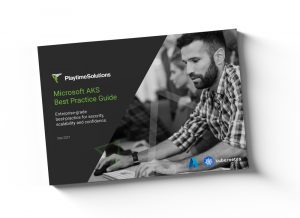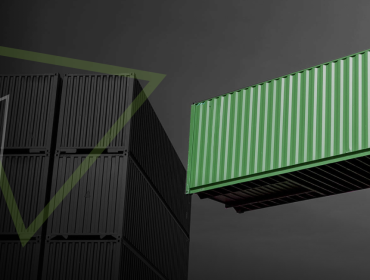Azure Container Apps - a game changer.
- Chris Shelton
- November 18, 2021
- Insights
On November 9th, Microsoft released its preview of the Azure Container Apps service – a Platform as a Service (PaaS) which allows you to build and deploy microservices using serverless containers.
Until now, the default approach to running microservice applications on Azure has been via the Azure Kubernetes Service (AKS). Using Kubernetes can be quite challenging; maintaining best-practice, secure, and scalable clusters can require considerable knowledge and has a non-trivial operational overhead. Azure Container Apps aims to abstract away these concerns, so you can focus on building your application and not having to be an infrastructure expert.
Let’s get stuck into some of the reasons why we think this service is going to be a game-changer for building microservice-style applications in Azure.
1. Simplify deployments and application management
Standing up new applications in Azure Container Apps is simple. Deploy as many services as your application requires into each environment and manage their lifecycle with your favourite DevOps platform.
Under the hood, your workloads are running on Kubernetes, but you won’t need to be an expert in Kubernetes manifests, or Helm charts – Use the Azure CLI, Arm/Bicep or other IaC tools that you are already familiar with to deploy and upgrade your services.
2. Built-in load-based scaling
Scaling your application on-demand is a breeze with built-in support for the Kubernetes Event Driven Autoscaler (KEDA). Define how many container instances you require based on queue length, concurrent requests, CPU, memory, and many other predefined or custom scalers. Event handlers and other background processing services can scale back to zero when there’s nothing to do, dropping the cost to zero for these components – that’s a huge win.
3. Security of data in transit
Azure Container Apps can be deployed into VNETs in your Azure subscription thereby allowing you to access your resources securely via private endpoints, giving you the confidence that your data will not travel across the public internet when interacting with your services.
Container apps can be accessed by external ingress endpoints with TLS enabled by default. Internal communication between services will not leave Azure, even when using service-to-service communication via the external ingress endpoints.
4. Revisions, blue-green deployments, and traffic-splitting
Versioning and rollouts are handled with a declarative and desired-state approach. Simply modify your deployment JSON or run CLI commands and the Container Apps service will manage the lifecycle of your services, creating new revisions and rolling out the changes.
Blue-green deployments and traffic-splitting is also a first-class feature. This is an advanced technique and is quite often difficult to achieve in practice. This capability is now within reach without requiring expert DevOps knowledge.
5. Dapr support out of the box
Dapr is fast becoming a standard way to run distributed applications. Simply enable Dapr for your container app to leverage MTLS, observability, resiliency, service location, state persistence and publish/subscribe. These building blocks would usually be handled specifically via a service-mesh or directly in your application code.
6. Built-in observability and logging
Leverage the Azure Monitor to view your application logs, traces, and metrics. OpenTelemetry instrumentation is applied transparently as part of the service when using Dapr, so you’ll be able to explore visual representations of distributed requests across multiple services and resources, giving insights into latency issues or other faults in your application.
When should I use AKS instead of Azure Container Apps?
From complex microservice style applications to hobby projects, the Azure Container Apps service seems like a good fit. However, Kubernetes isn’t going anywhere, so if you need to run Helm charts or require access to the underlying Kubernetes API, or you’re a larger enterprise with more specific requirements around networking and infrastructure, the Azure Container Apps service might not be the right choice for your project, and you should consider Kubernetes on AKS instead.
We can’t wait for this service to become generally available. In the meanwhile, we’ll be keeping up to date with all the latest developments and feature additions so we can hit the ground running with containerised microservice workloads in production.
Are you currently using Kubernetes or thinking about running containerised workloads on Azure?
If you would like to explore options around getting started in the cloud or migrating your existing application, please feel free to contact us.
 Playtime Solutions’
Playtime Solutions’
AKS Best Practice Guide
A 23 page best-practice checklist, leveraging Playtime Solutions’ hands-on experience in designing, developing and delivering enterprise-grade application. This guide assists IT and DevOps professionals in creating an enterprise-grade Kubernetes environment in Microsoft AKS.










